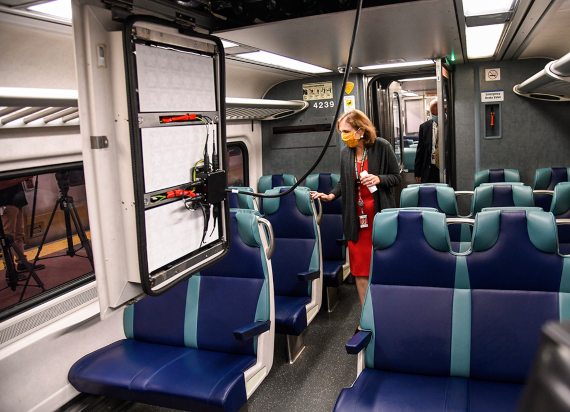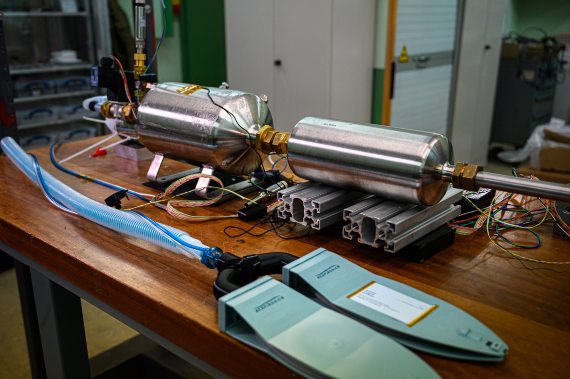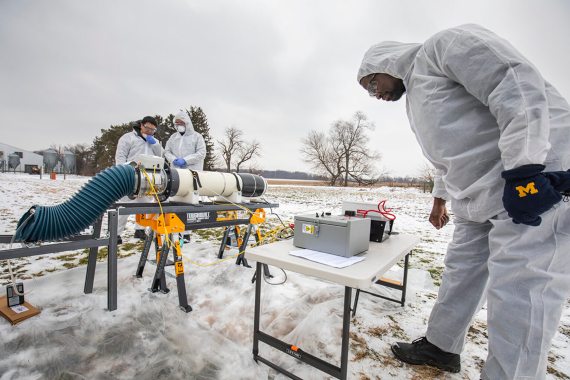The largest public transport agency in the US, the Metropolitan Transportation Authority (MTA) in New York, has introduced a new air filtration technology in two of its commuter rail services, based on an electric field that generates ionised particles to “eradicate 99.99998% of airborne viruses, bacteria and particulates, including COVID-19,” says a statement. The MTA claims that the innovative system, developed by Knorr Brake Company, achieves a level of air cleanliness that exceeds that recommended by the Centers for Disease Control for certain medical facilities. The fact that even trains are now anti-COVID machines illustrates a trend that has taken hold during the current pandemic: science has pulverised its internal boundaries. While research activity in the globalised world is increasingly interdisciplinary, the coronavirus has conjured up the power of human ingenuity in all areas to fight this terrible scourge.

The response of the scientific, technological and academic community to the pandemic has been overwhelming. It is no longer just biomedical professionals who have poured their research efforts into the battle against the SARS-CoV-2 coronavirus; engineers, technologists, chemists, mathematicians, physicists, psychologists, economists, sociologists, among many others, have done the same. Experts in a wide range of areas have focused their studies on the pandemic, making numerous contributions from their respective fields in what is undoubtedly the greatest interdisciplinary effort in history, and thus placing the best talent on the planet at the service of the same objective.
The common goal of CERN, NASA and Mercedes F1
Until just a few months ago, the work of the European Laboratory for Particle Physics (CERN), NASA or the Mercedes Formula 1 team had little in common. However, the urgency of the pandemic has led to these three entities converging on one goal, to design improved respirators to assist in the treatment of COVID-19 patients. In Geneva, CERN physicists and engineers have created the HEV (High Energy Physics Community Ventilator), a low-cost respirator designed to operate on batteries. While NASA’s Jet Propulsion Laboratory has done the same with its prototype VITAL (Ventilator Intervention Technology Accessible Locally), tested at the Icahn School of Medicine on Mount Sinai in New York. Meanwhile, engineers at Mercedes, in collaboration with University College London, developed CPAP (Continuous Positive Airway Pressure) devices. Even the Dyson company, known for its vacuum cleaners, created a new respirator in 30 days.

Engineering has responded by taking up the challenge posed by the findings in other disciplines. Epidemiologists, virologists and environmental physicists began to uncover evidence that the coronavirus was transmitted not only by exhaled droplets but also by aerosols. So, engineers set to work designing new air-purification systems that would reduce the risk of infection in enclosed spaces. In addition to the one mentioned above, other companies specialising in transport mechanics, such as Wabtec, have also launched new high-efficiency filtration systems. At the University of Michigan, the team led by engineer Herek Clack is working on a cold plasma reactor capable of inactivating 99.9% of airborne viruses. Researchers have already demonstrated the effectiveness of the system on pig farms, and are now studying its application to public transport, such as cruise ships or aircraft cabins, with the aim of replacing the use of masks.
Knowledge gained in other areas applied to COVID-19
Many theoretical scientists have also exported their knowledge gained in other areas to the problem of COVID-19. At the Goethe University in Frankfurt, the research of theoretical physicist Roser Valentí is normally focused on the abstruse field of modelling the properties of certain superconducting materials at the microscopic level. However, with the arrival of COVID-19, she saw that she could apply her science of particle dynamics to that of people and model the future evolution of the pandemic. Now, Valentí told Nature, she plans to continue combining her previous line of research with this new aspect of her work. According to Nature, the arXiv pre-publication server, dedicated primarily to physics, has received work on the coronavirus from more than one hundred authors who normally research high-energy or condensed matter physics. At the Bank of England, plasma physicist Arthur Turrell studies the impact of the coronavirus on the economy, while at the University of Cambridge economist Flavio Toxvaerd builds simulation models of the pandemic.

In short, the global crisis has prompted countless researchers to leave their traditional cubicles to mingle in a great pool of knowledge where ideas are bubbling up to get humanity out of this emergency. However, as an interdisciplinary group of scientists from the University of Toronto told The Conversation, to make the most of this potential it will still be necessary for universities to transform their study programmes, which are now focused on a “single-discipline approach.” “Universities must find ways to model the multi-sectorial, interdisciplinary solidarity required to face the escalating complexity of 21st-century global health,” wrote the researchers, who call for interaction between many different disciplines, from the arts and social sciences to microbiology and clinical medicine.
The One Health approach
An example of multidisciplinarity that is growing, driven by the urgency of the pandemic, is the One Health approach, which addresses global health challenges at the intersection of medicine, animal health and environmental conservation—locally, nationally and globally. The idea of One Health began to take shape at the beginning of this century, and since then various institutions have signed on, including medical societies, academic and research entities, non-profit organisations, government agencies and international bodies such as the UN and the World Bank, creating various platforms as meeting points for professionals and researchers.
A brilliant example of how to apply the One Health approach to research is the system of artificial ecosystems designed by researchers at Colorado State University. Scientists have created controlled spaces in climate conditions that are regulated at will and in which they introduce various animal species along with certain pathogenic microorganisms. In this way they can simulate and study in real time the dynamics of the spread of these diseases in scenarios that simulate farms or animal markets similar to those in Asia, in order to analyse the risk of zoonotic infections that could threaten human health. The researchers are confident that their approach will help them to understand the transmission of pathogens between animals and to humans, and that it will facilitate the development of new diagnostic tests, vaccines and drugs. All this in the hope that at least the next pandemic will find us better prepared.
Comments on this publication